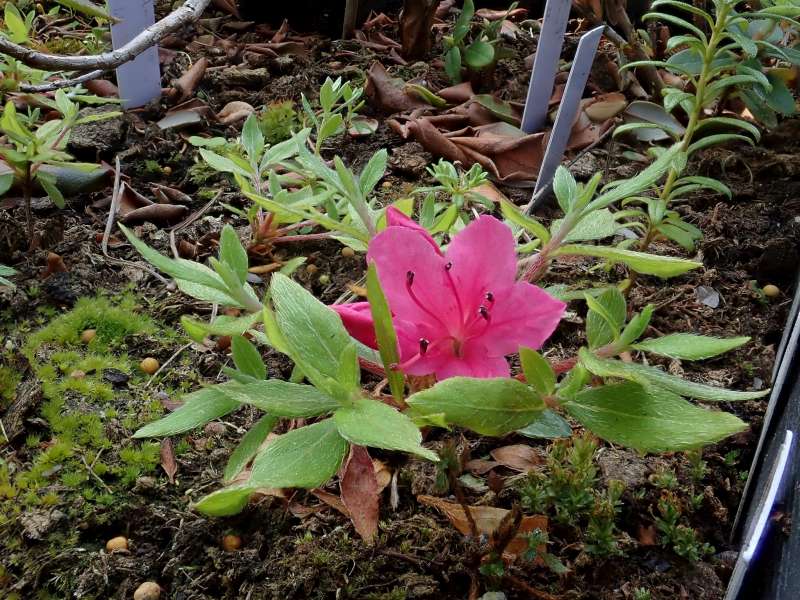Rhododendron kaempferi x kuisianum / x kurume
Billeder af Rhododendron kaempferi x kuisianum / x kurume
Beskrivelse
R. Kurume Azalea (Tsutsusi) (-26 °C). R. kaempferi er endemisk på Kyushu hvor den vokser i bjergene. Taksonomien er speciel. Fra 0 til ca. 500 m og sjældent over 800 m vokser Rhododendron kaempferi Planchon. I alpine græs- og vulkan områder i 1300 – 1700 m vokser Rhododendron kiusianum Makino, i området mellem R. kaempferi og R. kiusianum vokser hybrider af disse to arter. I 1918 da E.H. Wilson besøgte området var han helt overbevist om at ‘Kurume Azaleas’ har sin oprindelse blandt hybriderne i dette mellemområde.
Kurt Hansen
Der er mange billeder på Google af variationerne.
PLNT
Rhododendron ‘Kirin’ (Kurume) (Ea/d)
ABOUT
The Rhododendron ‘Kirin’, also commonly known as the Kurume Azalea, is a visually striking plant with a profusion of blooms. The flowers of the ‘Kirin’ azalea emerge in a remarkable display of color, typically presenting in shades of soft pink. These blossoms are funnel-shaped and often have a gentle ruffling along their edges, contributing to an appearance of delicate beauty. Each flower cluster is a dense, visually appealing arrangement that can add a burst of color to any garden. The foliage of the Kurume Azalea is also noteworthy, comprised of small, glossy leaves that provide a rich green backdrop to the vibrant flowers. In autumn, the leaves may turn to attractive bronze hues, offering year-round interest. The overall impression of the Rhododendron ‘Kirin’ is one of classic elegance, with its lush, vivid flowers contrasting beautifully against the evergreen foliage.
About this plant
Family: Ericaceae
Synonyms: Kurume Azalea, Kirin Azalea
Common names: Rhododendron ‘Kirin’
Toxicity
To humans: Rhododendron, including the ‘Kirin’ variety, contains toxic compounds called grayanotoxins which are poisonous to humans if ingested. Symptoms of rhododendron poisoning can include vomiting, diarrhea, hypersalivation, weakness, coma, hypotension, and potentially death due to cardiovascular collapse.
To pets: Rhododendron is toxic to pets as well. If a pet ingests any part of this plant, it can experience symptoms similar to those in humans, such as vomiting, diarrhea, drooling, weakness, and in extreme cases, seizures, coma, and even death due to respiratory failure or cardiovascular collapse.
Characteristics
Life cycle: Perennials
Foliage type: Evergreen
Color of leaves: Green
Flower color: Pink
Height: 91 cm
Spread: 91 cm
Plant type: Shrub
Hardiness zones: 5
Native area: Japan


